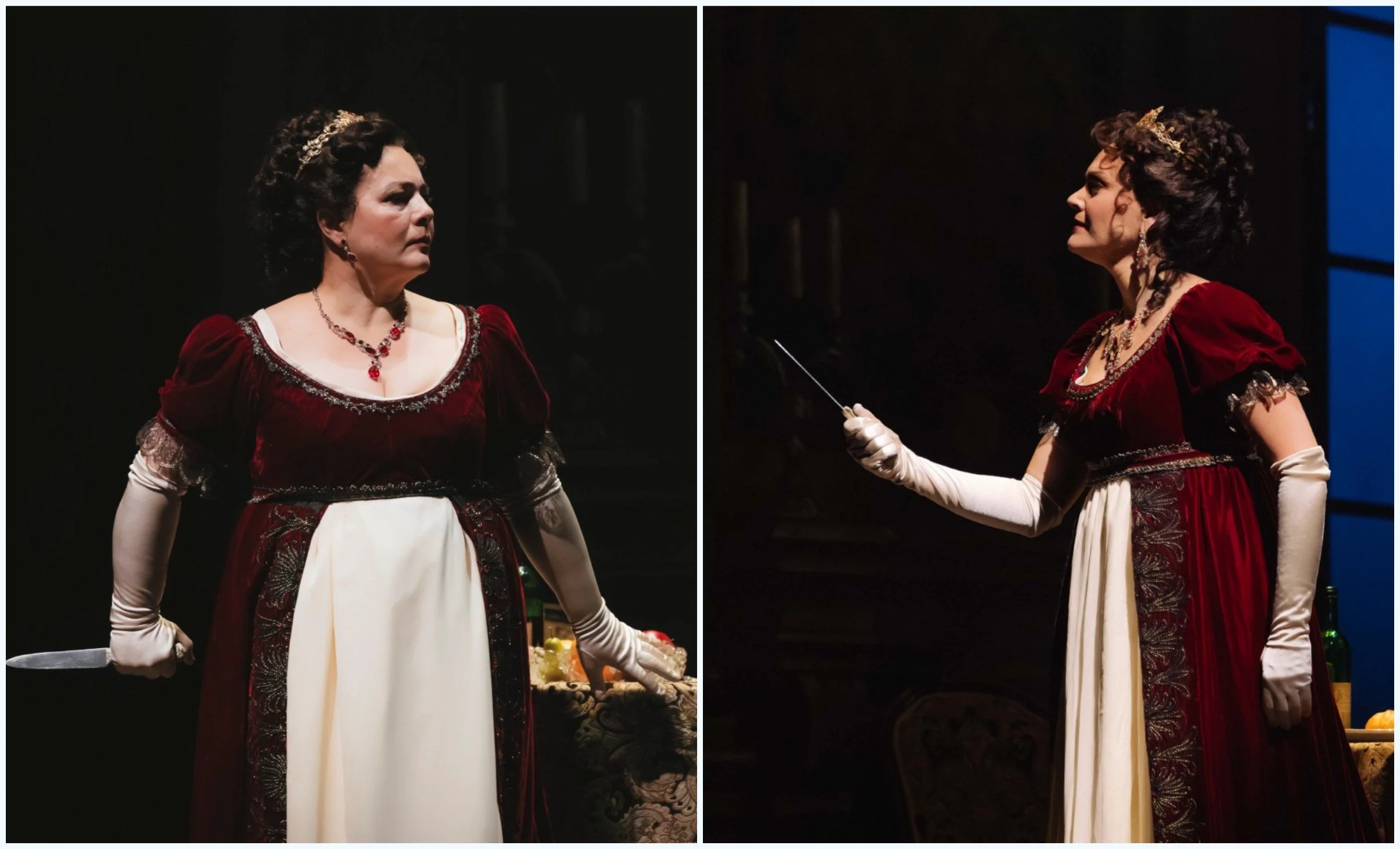Seattle Turns Puccini’s Shabby Little Shocker Into a Beautiful Class Act
/By Truman C. Wang
5/13/2025
Photo credit: Sunny Martini | Seattle Opera
Puccini’s Tosca premiered in Rome on January 14, 1900, to popular acclaim but lukewarm critical reception (“too many bells and no music!”) Alex Ross is among today’s critics who write glowingly about Puccini, but such critical validation came late. In the 1950’s, Joseph Kerman, my music professor at Cal Berkeley, called Tosca “a shabby little shocker” in his seminal book ‘Opera as Drama’. (But he apparently had mellowed by the 1990’s, when, one day before class started, I heard him play on the piano snippets from Puccini and Handel operas.)
The staging in Seattle is still a shocker, but hardly shabby with opulent painted backdrops, beautiful period-correct costumes and props. Such things are increasingly rare to see in American opera houses. In the past 15 years or so, opera in America has undergone a seismic shift from beautiful traditional stagings, drawing woos and ahhs from the audience, to European regietheater, drawing boos and catcalls. In 2009, when the Met replaced Zeffirelli’s decades-old Tosca with Luc Bondy’s new avant-garde production, boos were heard on the first night.
I was very pleased to see Seattle Opera going back into its antique vault to dust off the old painted backdrops (which were last seen in the 2015 Tosca) These are special scenic backdrops, created by Milan’s legendary scene shop Ercole Sormani, and purchased by Seattle Opera’s founding director Glynn Ross in 1964, that give illusions of 3D and depth (trompe-l’oeil is the correct technical term.) Most of the mis-en-scène items specified by Puccini are there in their right places: painter’s scaffolding inside the Attavanti chapel, Scarpia’s Farnese Palace apartment replete with three tables, a sofa and a picture window (but no fireplace), and the rooftop of Castel Sant’Angelo with St. Peter’s in the background.
Brenna Corner, the director, brings out the opera’s gritty human drama in sharp relief against the grandiose scenic backdrops. I attended two performances, on May 9-10, and heard two different casts. There was no ‘regie’ director’s concept at odds with the composer’s. The singers, for the most part, were given free rein to act and develop their own characters. The two casts were as different as they were exciting in their own ways.
Armenian soprano Lianna Haroutounian is the face of Tosca on all the posters and marketing materials. She has the rare distinction of having sung Wagner’s Isolde in Liège just a few months prior, her voice ample and her singing absolutely secure. The warm, full tones of her lirico-spinto soprano flowed evenly in the love duet without any forcing and, when forced by Scarpia’s abuse, without losing its beauty. Her “Vissi d'arte” was a full-throttled cry of despair (no pianissimo on her high B-flat). It was not a temperamental performance, unlike that of the Spanish soprano Vanessa Goikoetxea, a fiery, spiky Tosca not to be messed with, either by Mario or by Scarpia. She told Mario to “paint [Marchese Attavanti’s] eyes dark” in no uncertain terms, and almost died from a panic attack upon realizing Scarpia’s evil intensions. Goikoetxea’s upper register occasionally became untidy under pressure, but her “Vissi d'arte” was movingly sung and vocally faultless, capped by a softly floated and long-held high B-flat.
The two Scarpias were fine: Željko Lučić, a sinister but noble-sounding Baron, and Craig Colclough, sinister and a bit crude in his scenes with Goikoetxea. The two Cavaradossis had one clear winner, the South Korean tenor Yonghoon Lee being the more virile and vocally exciting with a ringing top (although his Italian diction was all vowels – “iolanza” instead of “violenza”, “ittoia” instead of “vittoria”, and so forth.) Rame Lahaj, the Kosovar tenor, sounded smaller, more belcanto than verismo, and swallowed most of his vowels; he floated some beautiful high notes in “E lucevan le stelle”, but his slow fall in front of the firing squad was unconvincing.
Italian conductor Leonardo Sini, in his Seattle debut, was a fine collaborator, not merely an accompanist, of the singers, matching their declarations and phrasing with the full force of the orchestra, memorably in the wild outbursts of the torture scene and Scarpia’s “Gia mi dicon venal” rant in act two.
Two more performances of Tosca remain, on May 14 and 17, both with Goikoetxea as Tosca, Lahaj as Cavaradossi and Colclough as Scarpia.
Truman C. Wang is Editor-in-Chief of Classical Voice, whose articles have appeared in the Pasadena Star-News, San Gabriel Valley Tribune, other Southern California publications, as well as the Hawaiian Chinese Daily. He studied Integrative Biology and Music at U.C. Berkeley.














